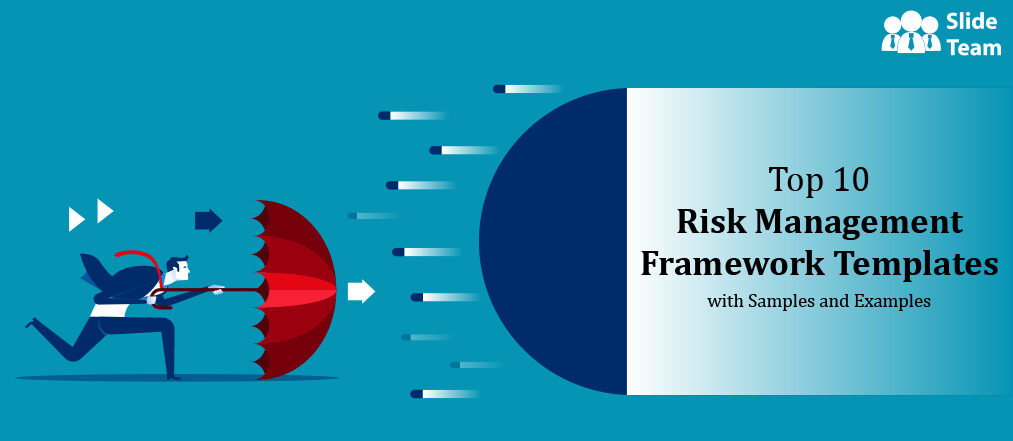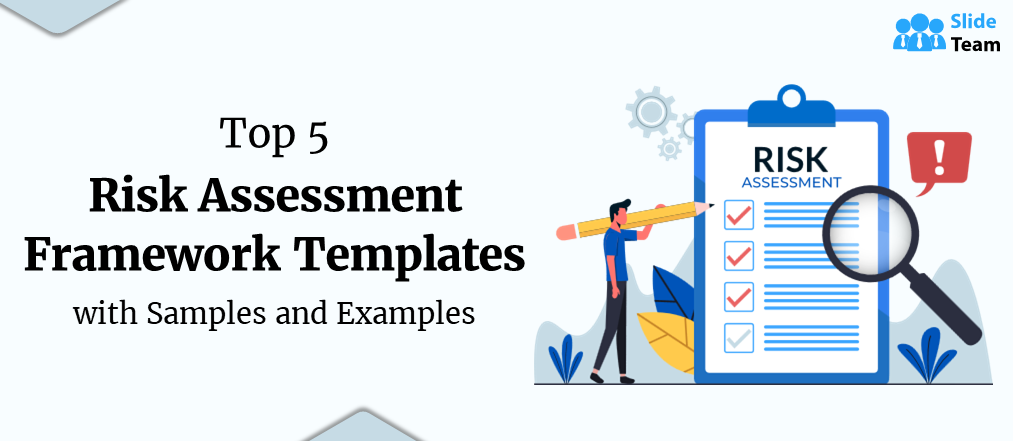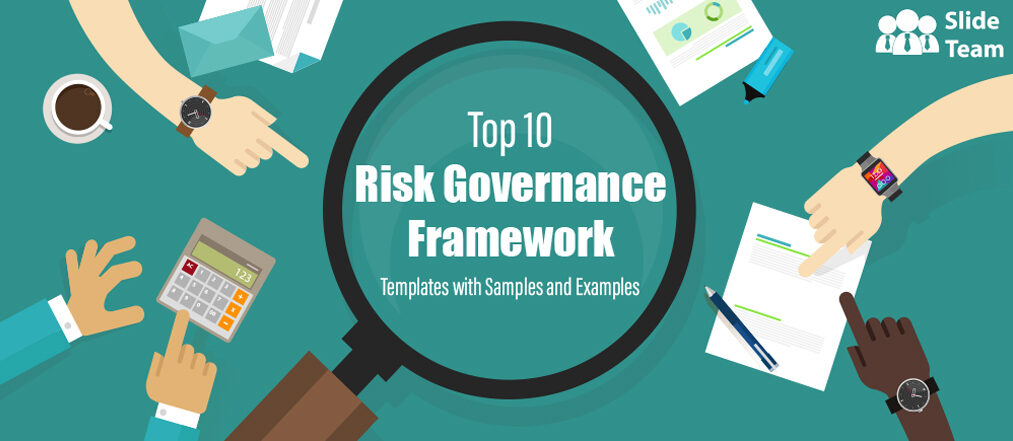The use of Zoom, a videoconferencing service, ballooned overnight over 2020, with people working from home and communicating with friends and family via the app as the Covid pandemic spread. In April 2020, however, a cyberattack known as Zoom-bombing allowed cybercriminals to join private meetings, listen in on conversations, and share offensive images, videos, and screens. Zoom had to add features and update its app to improve security.
Businesses in the modern digital era face such, and other even more sinister RISKS. Some of these can cause significant income losses or even insolvency. Organizations are turning to the Risk Management Framework (RMF) to provide a structured method for integrating IT, privacy, and risk management activities to ensure it does not get hit by such risks.
This framework helps a company's risk culture become more best-practices-driven, ensuring that no organization’s financial future can be crippled with a single risk that was ignored or not considered.
To plan, structure, and organize a top-notch financial risk management strategy, click here.
This blog will help you tackle elementary concerns about risk management in your company. This RMF will assist you in defining risk management requirements so that you can move from detecting the most critical risks to mitigating them in a flash. It provides a collection of the Top 10 Risk Management Framework Templates from SlideTeam to build practical defenses against specified risks.
Check out our blog on Risk Management Strategy to create a comprehensive framework for resolving strategic, operational, and financial breakdowns.
Use these PPT Templates to establish a framework for risk management and improve the physical, logical, and software security of architectures to lower vulnerabilities.
Put risk mitigation processes on the frontline of your organization’s defenses with SlideTeam’s best-in-class PowerPoint Templates!
Template 1: Risk Management Framework in Organization PPT
Develop the best risk management practices and procedures for your organization. Use this PPT Template to create a framework for risk reporting and monitoring. This complete deck is a go-to strategy for risk identification, risk measurement, and standardized risk management protocols in an organization. It includes key objectives, a purpose, a risk assessment matrix, requirements, and a procedure, among other things. This template is designed with high-quality visuals, images, and graphics to help you focus on the most pressing issues and allocate resources with efficiency. With this download, you can help your company mitigate risks without impeding growth. Get it now!
Template 2: Operational Risk Management Framework in Financial Institutions PPT
Create an operational risk management framework that adheres to best industry practices. Use this PowerPoint Template to create consistent, transparent, and sound risk assessments for your company’s operational details. This deck is useful for developing, categorizing, and assessing risk mitigation policies for improving your operational risk management system. It includes global operational risk insights, risk management performance overview, risk integration, risk analysis, risk monitoring, and reporting. This presentation can be used to define specialized risk categories such as unauthorized trading, third-party risk, fraud, dubious sales practices, and so on. Use the tools and mitigation techniques to assess and manage operational risk. Save it now!
Template 3: Cyber-security Risk Management Framework PPT
Boost your system’s ability to protect, detect, and restore data. Use this PPT Template to propose a cyber-security risk management framework to protect your company’s valuable and confidential information. This comprehensive deck is designed to help you implement a risk governance program that will manage malicious attacks, malware, and human error. This template is useful for addressing your company’s current security management capabilities and security infrastructure performance. It includes elements for effective IT management, an in-depth overview of asset identification, incident management, threat and vulnerability management, and risk management. This slide can serve as a training module on the performance of security infrastructure and dashboards. Use this PowerPoint Presentation to define the security architecture, data flows, and design of your system. Get it now!
Template 4: Risk Management Framework for Information Security Template
Use this PPT Template to manage and monitor risks associated with your company’s use of information technology. This deck is essential for protecting digital data and other types of information through information security (Infosec). Prepare for and carry out a risk assessment in addition to risk governance strategies to protect sensitive information from unauthorized activities, disruption, or destruction. Maintain data security and risk mitigation policies by ensuring the safety and privacy of critical data. Download now!
Template 5: Cyber-security and Digital Business Risk Management Framework Template
Create and test digital security programs for your company. This PPT Template can be used to illustrate the key components of your organization's information security framework. This risk reporting and monitoring framework is intended to supplement your information security program with elements on context and leadership, evaluation and direction, prevention, and detection to support a digital transformation initiative. This PowerPoint Slide can assist your company in embracing emerging digital solutions and leveraging third- and fourth-party vendors without jeopardizing cyber-security. Download now!
Template 6: Organizational IT Risk Management Framework PPT
Develop a holistic approach to risk assessment and management specific to IT functions. This PPT Template can be used to demonstrate a risk identification and risk mitigation framework for improving security controls in the processing of financial details, proprietary information, or customer data. This slide contains a four-stage process for assessing organizational risk, business process risk, vendor risk, and IT risk in order to insulate businesses from program management risk, investment risk, budgetary risk, legal liability risk, safety risk, and so on. Use the presentation to provide adequate risk response measures for your business functions. Get it now!
Template 7: Cyber Security Risk Management Plan Framework PPT
Create a flexible and adaptable cyber-security risk assessment plan to keep up with the changing risk landscape in business. Use this PowerPoint Template for identifying and managing cyber-security threats and creating an RMF against these. This infographic can assist businesses in evaluating their security infrastructure. The six critical processes in RMF’s cyber risk management strategy are: Categorize, choose, implement, analyze, approve, and monitor. This helps top management make well-informed decisions to minimize disruptions that cyber-attacks cause. Save it right away!
Template 8: Supply Chain Risk Management Framework with Business Processes Template
Do you want to create a systematic approach to supply-chain risk management? Use this pre-made PPT Template to introduce a risk governance framework on current supply chain issues, challenges, and solutions. It comprises elements such as key success metrics (R&D cost, spend aggregation, procurement expense), core business processes, and risks preventing success to mitigate inherent uncertainties to solve supply chain issues such as uncertain customer demand, supply, and cost. This PowerPoint Presentation will assist in identifying and countering supply chain attacks at any point in the supply chain's lifecycle. Download now!
Template 9: CIOs Initiatives for Strategic IT Risk Management Framework PPT
Use this PPT Template to introduce the Chief Information Officer (CIO) framework across the enterprise. It is beneficial for stakeholders and teams in identifying, assessing, managing and reporting risks. This slide contains a risk governance action plan for preparing immediate, short-term, and long-term initiatives. It includes metrics on the implementation of enterprise security programs, control environments, and security processes to provide appropriate oversight for timely, informed decisions on at-risk projects. Use it as a discussion and navigation tool for corporate governance, risk management, and regulatory compliance efforts. Get it now!
Template 10: Incidents Prioritization Matrix Framework Template
Use this PPT Template to demonstrate an effective risk identification framework. This slide displays an incident prioritization matrix to assist organizations in monitoring incidents based on their level of urgency. This will make it easier to gauge the incident’s size and the potential harm it can cause before it is resolved. It includes three levels of urgency: High, Medium, and Low, which are used to determine the allocation of resources needed to complete work. Use this PowerPoint Presentation to reduce service downtime, improve customer and employee experience, and streamline request and change processes. Download now!
*******
Judge your organization’s risk appetite.
Risk management is a critical component of any business. Each step of the Risk Management Framework necessitates detailed knowledge components, including an understanding of the scope and mission of the system under review, as well as external data about the organization, personnel, and activities. Use the PowerPoint Templates from SlideTeam to create, develop, and maintain your organization’s risk management standards as part of your strategic and operational planning.
P.S. Explore our guide on risk management techniques to address the details of risk management for your organization.
FAQs ON RISK MANAGEMENT FRAMEWORK
- What are the most popular risk management frameworks?
A risk management framework is essential for businesses to achieve financial health and competitive advantage. Some popular RMF Models are:
- ISO 27005: The International Organization for Standardization (ISO) RMF is a critical component of a company’s overall IT strategy and operations. It addresses risk through metrics such as context establishment, risk assessment, risk treatment, risk acceptance, risk communication, and risk monitoring.
- NIST SP 800-30/39/53: The National Institutes of Standards and Technology (NIST) provides many risk management and control frameworks. NIST categorizes controls into three types: technical, operational, and management. The key functions such as identity, protect, detect, respond, and recover are then used to create a model that addresses each of these categories.
- Risk IT: ISACA's Risk IT guidelines were released in 2009 to provide a comprehensive RMF that connects IT risks to business risks. The key areas of focus are processes for risk governance, evaluation, and response.
- What are the six steps of the risk management framework?
A risk management framework is a useful tool for focusing on risks that can cause real harm. The six steps of the risk management framework described by Dr. Ariane Chapelle in his book ‘Operational Risk Management: Best Practices in the Financial Services Industry are as follows:
- Risk identification: This is the process of inspecting each work area and task to identify hazards inherent to the job. This aids in the development of effective risk-response initiatives.
- Risk analysis: This step entails categorizing of types of risks identified. It will assist the organization in determining its impact on the project and developing an initial risk mitigation strategy. A simple risk matrix that cross-references likelihood and impact allows risks to be assessed against these two factors and classified as one of the following: Critical, high, moderate, low, or very low risk.
- Risk ownership: Assigning risk ownership to proactivity handle the situation is part of this step. The person or team in charge will identify potential problems, risks, and their level of urgency. This will assist organizations in developing a culture of support and empowerment.
- Risk prioritization: Prioritization is a step in the risk assessment process that assists organizations in understanding the outcome of a process.
- Risk response plan: This step ensures that an appropriate risk response plan is in place for each type of risk to assist with risk mitigation. The response plan of an organization should include specific steps for risk mitigation, such as who oversees what, what needs to be done, and how quickly it needs to happen.
- Monitor risk management strategy: Examine your strategy to ensure that it is effective and that you are adequately prepared. This will help organizations evaluate how you handled situations that arose, as well as provide a means to improve your risk management processes.
- What are the seven principles of risk management?
- To ensure success, the risk strategy must be consistent with and relevant to the organization's overall culture and goals.
- Identify project risks before the project begins so that preventive measures and responses can be planned.
- Organizations should include stakeholders in the process of designing risk management plans. This allows organizations to identify and gain necessary insights about potential risks.
- Risk management procedures should include external and internal contexts in the planning phase, such as technological, political, societal, or legal impact. This will allow each company to communicate and deal with risks.
- Developing a risk review cycle is critical to assess risks and consider possible preventive measures.
- Another important principle of successful risk management is ensuring the roles and responsibilities of all participants. The more people who participate, the more effectively and creatively risk can be managed.
- A risk management plan should be reviewed to determine the scope for improvement.





 Customer Reviews
Customer Reviews



























